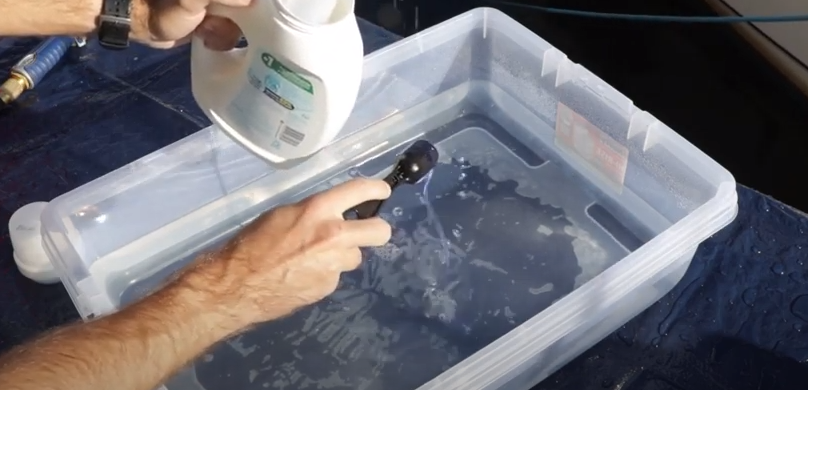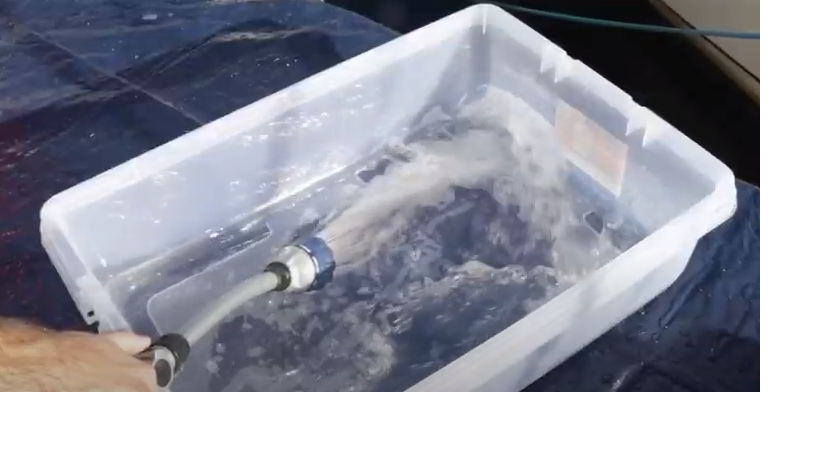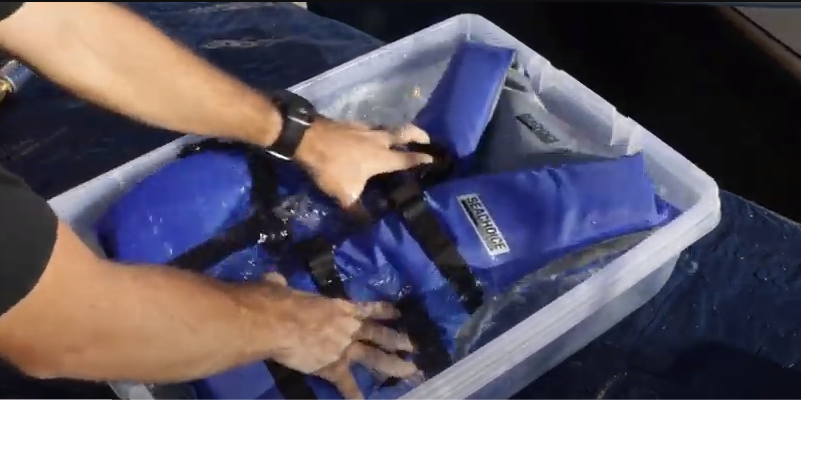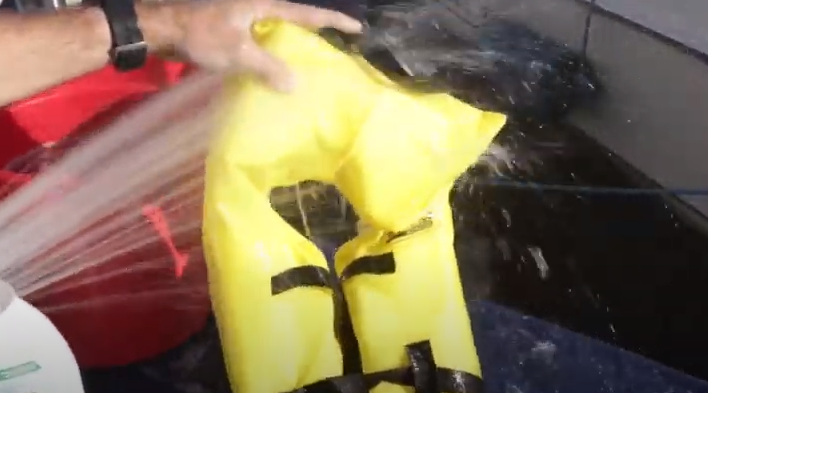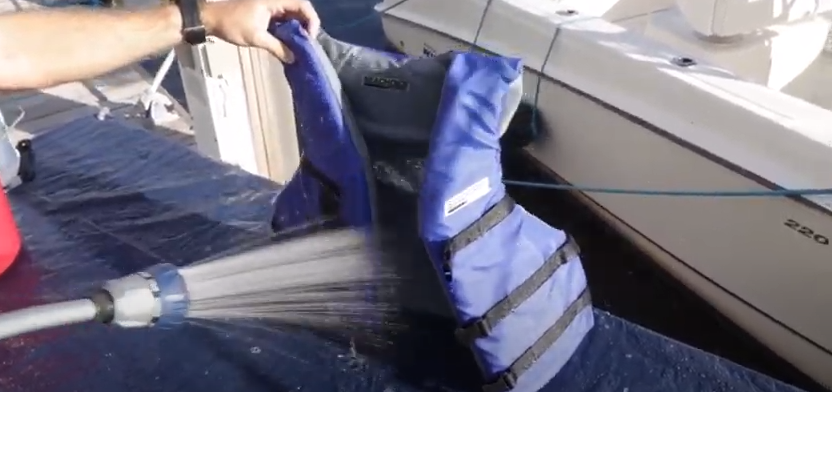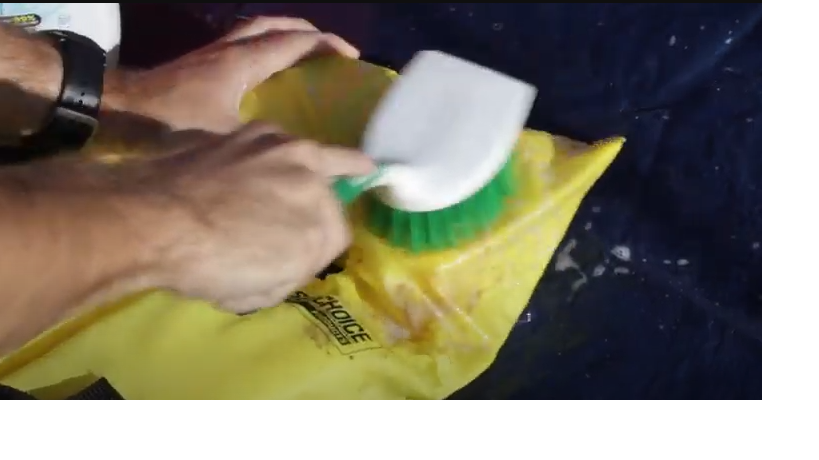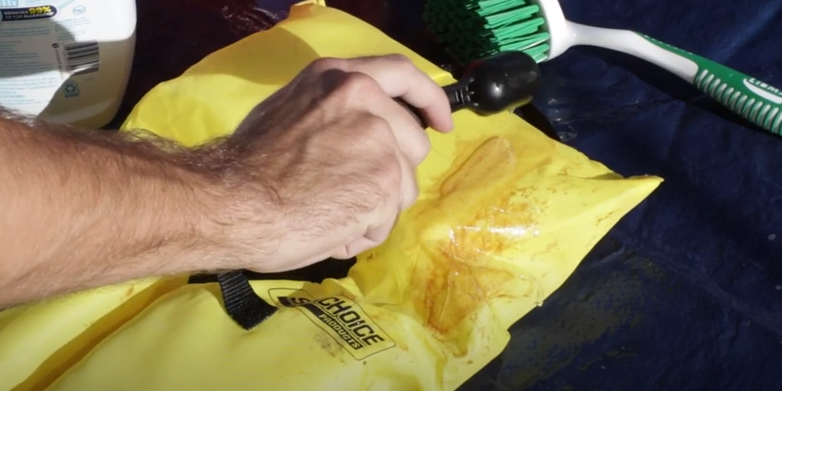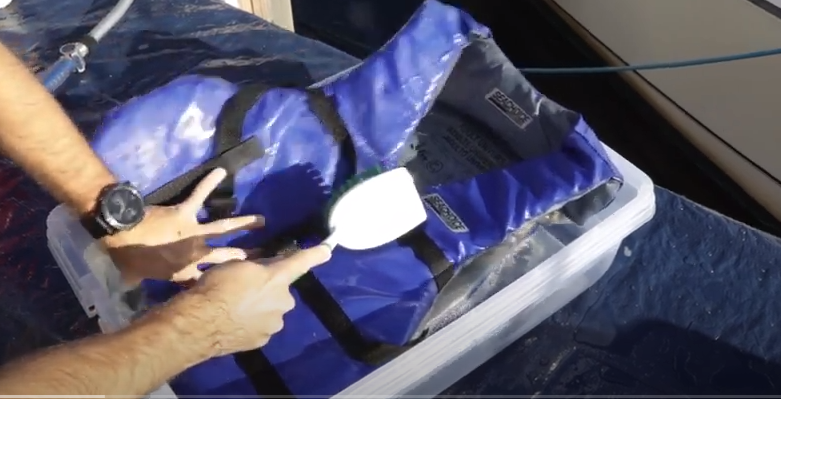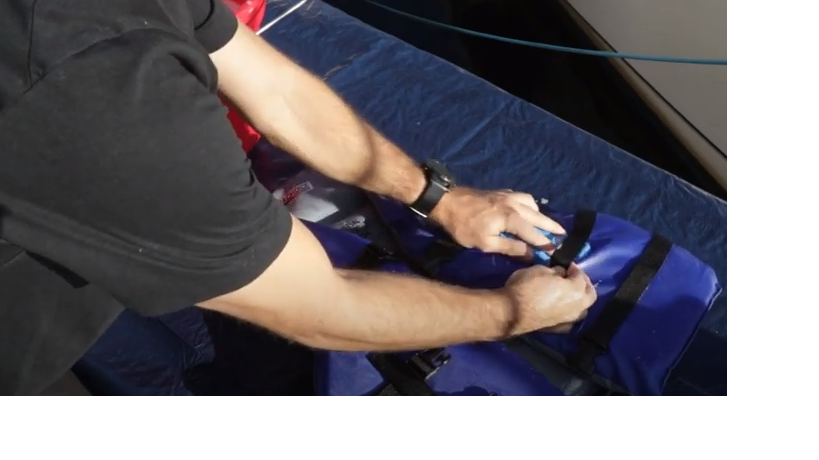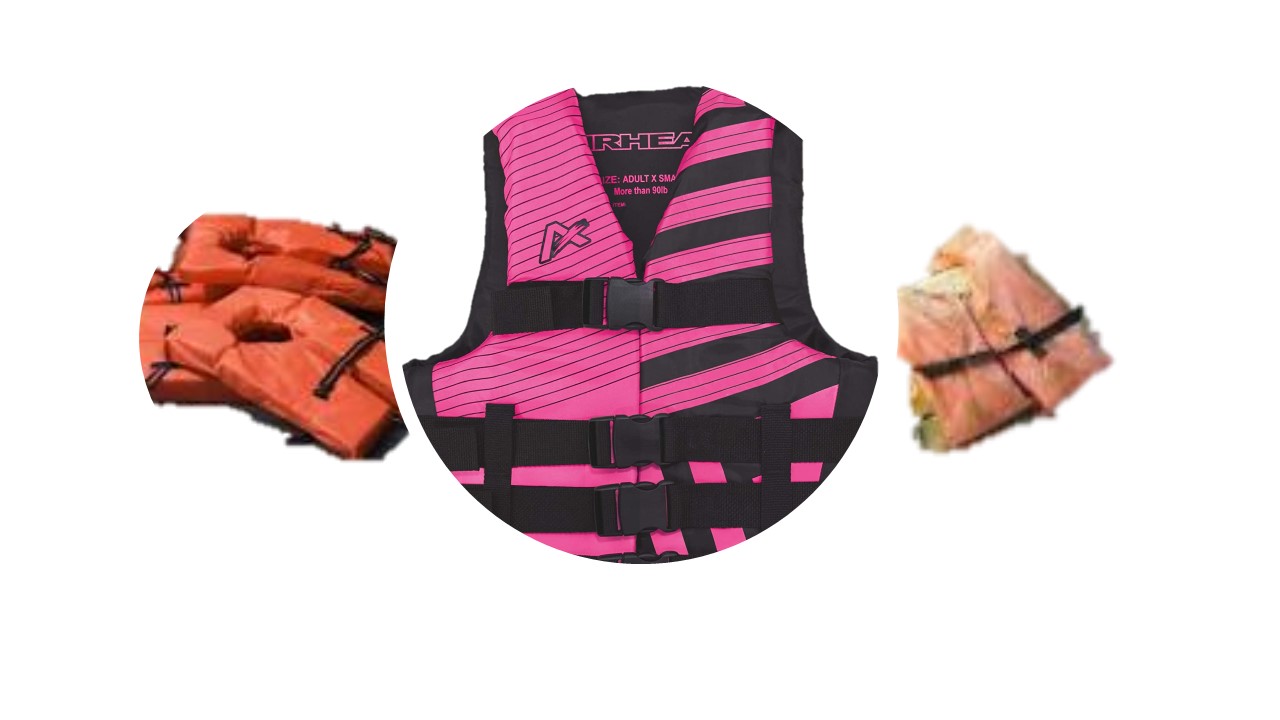How To Clean Life Jackets Effectively – Essential Maintenance For Safety And Durability
Looking for how to clean your life jacket effectively? Are you aware of the hidden danger lurking in your uncleaned life jacket? Neglecting to properly clean and maintain this crucial piece of safety equipment can have severe consequences.
Imagine being in a dire situation where every second counts—a sudden capsize, an unexpected current, or an unforeseen emergency. Your life jacket is your lifeline, your ultimate guardian against the perils of the water. But have you ever stopped to consider the impact of a dirty, neglected life jacket? Failing to clean it regularly can compromise its buoyancy, rendering it less effective in keeping you afloat.
In this eye-opening guide on how to clean life jackets, we’ll not only reveal the step-by-step cleaning process but also emphasize the grave hazards that come with neglecting this vital task. Brace yourself as we delve into the world of life jacket cleanliness, ensuring your safety and peace of mind.
How To Clean Life Jackets Effectively
Preparing for Cleaning
Before diving into the cleaning process, gather the essential supplies:
– Mild detergent or soap
– Soft-bristle brush
– Sponge or cloth
– Bucket of clean, cold, or lukewarm water
– Vinegar or baking soda (optional)
Step-By-Step Cleaning Process
Step 1. Inspect and Prep
Begin by carefully inspecting your life jacket for any visible dirt, stains, or debris. Take note of any removable parts, such as straps or buckles. If your life jacket allows for disassembly, refer to the manufacturer’s instructions to safely detach these components.
2. Surface Cleaning
Depending on the type of life jacket and its fabric, you can choose between spot cleaning or gentle handwashing.
Spot cleaning is suitable for small areas with stains or dirt buildup. Use a soft brush or sponge and a mild detergent mixed with water to gently scrub the affected area. For larger surface cleaning, submerge the life jacket in a basin or bathtub filled with lukewarm water and mild detergent.
Here are the steps to follow:
- Rinse the jacket thoroughly with clean water or a hose.
- Fill a container with 5 gallons of clean, cold water and add 1 oz Gear Aid Revivex cleaner or wetsuit cleaner.
- Put the cleaner exactly on the deeply soiled area and scrub the area gently with a soft bristled brush.
- Do not apply too much pressure while brushing it.
- After brushing off the dirt, dip the life jacket into the gallon of water and cleaner prepared earlier.
- Clean the straps and the whole surface thoroughly.
- Rinse it.
- Let it air dry in a well-ventilated area. Keep away from direct sunlight or heat. You can use an electric fan to accelerate the drying process as the process can take up to 72 hours.
- You can apply UV Protectant to the whole surface for better protection from, stain, dirt, sun fading and damage.
Note: Don’t kneel on it or press it to avoid damaging it.
3. Odor Removal
If your life jacket has an unpleasant odor even after using the Revivex cleaner, it’s important to tackle it effectively. After spot cleaning or handwashing, consider using a mixture of vinegar, baking soda and water.
Follow these steps to eliminate odor from your life jacket:
- Prepare a cleaning solution by filling a tub or large container with about 5 gallons of cool water.
- Enhance the cleaning power by adding vinegar and baking soda to the water. Give it a thorough stir to ensure proper mixing.
- Immerse your life jacket into the solution, ensuring it is fully submerged. Let it soak for approximately 5 minutes to effectively eliminate odors.
- Once the soaking time is complete, carefully remove the life jacket from the solution. Rinse with clean water.
- Allow your life jacket to air dry completely, ensuring it is kept away from direct sunlight or excessive heat. Optimal drying conditions help preserve the fabric and components, ensuring their longevity.
4. Reassembly and Final Inspection
If you disassemble any removable parts, carefully reattach them according to the manufacturer’s instructions.
Once the life jacket is dry, give it a final inspection to ensure there are no signs of damage, loose stitching, or weakened straps. Address any issues promptly or consider replacing the life jacket if necessary.
The Best Life Jacket Cleaning Methods (How To Clean Life Jackets)
1. Handwashing
Handwashing is a common and effective method for cleaning life jackets. It allows you to have greater control over the cleaning process and is suitable for most types of life jackets. Here are the pros and cons:
Pros
– You can pay close attention to stains and dirt, ensuring a thorough cleaning.
– Handwashing is gentle and minimizes the risk of damaging the life jacket’s fabric or components.
– It allows you to spot clean specific areas with targeted scrubbing.
Cons
– Handwashing can be time-consuming, especially for larger life jackets.
– Requires more physical effort compared to other methods.
– You need to ensure proper rinsing to eliminate all soap residue.
Precautions and Special Considerations
– Use a mild detergent specifically recommended for cleaning life jackets.
– Avoid scrubbing too vigorously to prevent damaging the fabric or removing any protective coatings.
2. Spot Cleaning
Spot cleaning is suitable for targeted stain removal or quick touch-ups. Here are the pros and cons:
Pros
– Spot cleaning allows you to address specific stains or dirt without washing the entire life jacket.
– It’s a quick and convenient method for minor cleaning needs.
– Suitable for situations where a full cleaning may not be necessary.
Cons
– Spot cleaning may not eliminate deep-seated or widespread dirt and odors.
– It’s not a comprehensive cleaning method and should be supplemented with regular overall cleaning.
– Not all types of stains or dirt can be effectively removed through spot cleaning alone.
Precautions and Special Considerations
– Use appropriate cleaning agents recommended for spot cleanings, such as mild detergents or stain removers.
– Test the cleaning agent on a small, inconspicuous area of the life jacket first to ensure it doesn’t cause discoloration or damage.
– After spot cleaning, rinse the area thoroughly to remove any residue and prevent potential skin irritation.
It’s crucial to consider the manufacturer’s instructions and the specific requirements of your life jacket when choosing a cleaning method.
RELATED: What Is A Characteristic Of A Type 3 Life Jacket
Benefits Of Cleaning Life Jackets (How To Clean Life Jackets)
1. Hygiene
Life jackets are frequently exposed to various elements such as water, sweat, dirt, and debris. Over time, these substances can accumulate, leading to unpleasant odors and potential bacterial growth.
Cleaning your life jacket helps remove dirt, bacteria, and other contaminants, ensuring hygienic and fresh-smelling gear.
2. Longevity
Regular cleaning and proper maintenance can significantly extend the lifespan of your life jacket. Removing dirt, stains, and saltwater residue helps prevent the deterioration of the fabric, stitching, and buoyancy materials.
By keeping your life jacket clean, you ensure that it remains in optimal condition and functions as intended, providing reliable safety over an extended period.
3. Performance
A clean life jacket performs better in the water. Accumulated dirt, grime, or oils can affect the buoyancy and flotation properties, potentially compromising its effectiveness in keeping you afloat.
By cleaning your life jacket, you ensure that it maintains its buoyancy and performance, providing the necessary flotation and safety when you need it most.
4. Safety
Cleaning your life jacket is ultimately a safety measure. Regular maintenance and inspections during the cleaning process allow you to identify any damage, such as frayed straps, loose stitching, or malfunctioning buckles.
By addressing these issues promptly, you ensure that your life jacket is in proper working condition, maximizing your safety during water activities.
Cleaning your life jacket is a responsible practice that not only maintains its appearance but also safeguards its performance and well-being.
RELATED: Do You Need A Life Jacket On A Paddle Board – Unveiling The Key To Safe And Enjoyable Adventures
The Best Cleaning Agents And Materials For Life Jackets (How To Clean Life Jackets)
1. Mild Detergent
A mild detergent is a safe and effective cleaning agent for most life jackets. Look for a detergent specifically formulated for delicate fabrics or outdoor gear.
Avoid using harsh detergents or those containing bleach, as they can damage the fabric or affect the life jacket’s buoyancy. Follow the manufacturer’s instructions for the recommended amount of detergent to use.
2. Vinegar
Vinegar is a natural cleaning agent that can help eliminate odors from your life jacket. Mix equal parts vinegar and water in a spray bottle or container and apply it to the areas with odors.
Let it sit for a few minutes before rinsing thoroughly. The acidic properties of vinegar help neutralize and remove unpleasant smells.
3. Soft Brushes or Sponges
When it comes to selecting cleaning materials, opt for soft brushes or sponges to prevent damaging the fabric or components of your life jacket.
Look for brushes with soft bristles or sponges specifically designed for delicate surfaces. Avoid abrasive scrub brushes or rough sponges that can cause friction and potential damage.
4. Microfiber Cloth
A microfiber cloth is an excellent option for gentle cleaning and drying. It is soft, absorbent, and non-abrasive, making it ideal for wiping down the surface of your life jacket without causing any harm. Use the microfiber cloth to remove excess water after rinsing or to gently wipe away dirt and stains.
5. Water
Clean, lukewarm water is the primary component in the cleaning process. Use water at an appropriate temperature as specified by the manufacturer or guidelines.
Avoid using hot water, as it can damage certain types of life jacket materials. Ensure thorough rinsing with clean water to remove any cleaning agents or residues.

Drying and Storage Of Life Jackets
Thorough drying and proper storage of your life jacket are vital steps to maintain its condition and prevent mold or mildew growth. Here’s what you need to know:
1. Air-Drying: After cleaning your life jacket, it’s crucial to allow it to air-dry completely before storing. Hang the life jacket or lay it flat on a clean and dry surface in a well-ventilated area.
Avoid drying it in direct sunlight or near heat sources like radiators, as excessive heat can damage the fabric and components.
2. Turning Inside Out: If possible, turn your life jacket inside out during the drying process. This helps ensure that both the outer and inner layers dry thoroughly, reducing the risk of moisture retention and potential mold or mildew growth.
3. Patience is Key: Drying times can vary depending on factors like humidity, fabric thickness, and the size of the life jacket. It’s important to exercise patience and allow sufficient time for the life jacket to air-dry completely.
Rushing the process may result in trapped moisture, which can lead to unpleasant odors and mold development.
4. Storage Location: Choose a dry and well-ventilated area for storing your life jacket. Avoid places with high humidity levels, such as basements or damp closets, as this can promote mold growth.
Ensure the storage area is free from chemicals, sharp objects, or any potential hazards that could damage or puncture the life jacket.
5. Proper Folding: When storing your life jacket, fold it neatly to minimize creases and wrinkles. Improper folding can lead to weakened areas over time. If the life jacket has inflatable components, ensure they are properly deflated and secured according to the manufacturer’s instructions.
6. Inspection Before Use: Before each use, carefully inspect your stored life jacket for any signs of damage, such as tears, frayed straps, or loose stitching. Check for the proper functioning of zippers, buckles, and any other fastening mechanisms.
If you notice any issues, address them promptly or consider replacing the life jacket if necessary.
By allowing your life jacket to dry thoroughly and storing it properly, you help maintain its integrity and extend its lifespan. These simple yet essential steps ensure that your life jacket remains in optimal condition, ready to provide reliable safety when you need it most.
Tips For Regular Maintenance Of Life Jackets (How To Clean Life Jackets)
Regular inspections and maintenance routines are crucial to ensure that your life jacket remains in good condition and can reliably perform its intended function. Here’s why it’s important and what you should look out for:
1. Inspect for Wear and Tear: Regularly examine your life jacket for any signs of wear and tear. Check the fabric for fraying, thinning areas, or discoloration. Inspect the stitching to ensure it’s secure and intact.
Look for any loose threads or areas where the stitching may have come undone. Identify any potential weak points that could compromise the life jacket’s performance.
2. Check Fastening Mechanisms: Pay close attention to the buckles, zippers, and other fastening mechanisms on your life jacket. Ensure they are in good working order, securely fasten, and release without difficulty. Check for any signs of damage or corrosion that could affect their functionality.
3. Test Inflatable Components (if applicable): If your life jacket has inflatable components, such as CO2 cartridges or manual inflation tubes, follow the manufacturer’s instructions on inspecting and testing them. Ensure they are properly secured, and undamaged, and can inflate the life jacket as intended.
4. Consider Replacement: There are certain instances where it may be necessary to replace your life jacket, even if it appears to be in good condition. Here are a few situations to consider:
– Excessive Wear: If your life jacket shows significant signs of wear and tear, such as faded fabric, weakened straps, or extensive stitching damage, it’s time to replace it. Aging materials may lose their effectiveness and compromise the life jacket’s buoyancy and safety features.
– Failed Inspection: If during your regular inspections you identify any critical defects or damage that cannot be repaired, it’s advisable to replace the life jacket. Safety should always be the top priority, and a compromised life jacket may not provide the necessary protection in an emergency.
– Outdated Design or Standards: Keep abreast of current life jacket standards and regulations. If your life jacket is outdated and doesn’t comply with the latest safety guidelines, consider replacing it with a newer model that meets the current standards.
Regular maintenance and inspections are essential to ensure your life jacket is in optimal working condition.
Additional Tips and Precautions For How To Clean Life Jackets
In addition to regular maintenance and inspections, here are some extra tips, tricks, and precautions to help you maintain your life jacket effectively:
1. Avoid Harsh Chemicals
When cleaning your life jacket, avoid using harsh chemicals, strong solvents, or abrasive cleaners. These can damage the fabric, degrade the flotation material, or compromise the integrity of the life jacket. Stick to mild detergents or cleaning agents specifically recommended for life jacket maintenance.
2. Steer Clear of Excessive Heat
Excessive heat can be detrimental to the life jacket’s fabric and components. Avoid drying your life jacket near direct sunlight, radiators, heaters, or other heat sources that can cause shrinkage, deformation, or weakening of the material. Opt for air-drying in a well-ventilated area instead.
3. Gentle Scrubbing
When cleaning, use gentle scrubbing techniques to avoid damaging the fabric or removing any protective coatings. Opt for soft-bristle brushes or sponges designed for delicate surfaces. Avoid abrasive scrubbing or vigorous rubbing, as it can wear down the fabric or stitching.
4. Store Unfolded
It’s recommended to store your life jacket unfolded to prevent creases or folds that could weaken the fabric or leave permanent marks. Keeping it flat or hanging it in a suitable location helps maintain its shape and ensures easy accessibility when needed.
5. Keep Away from Sharp Objects
When storing your life jacket, ensure it is kept away from sharp objects or rough surfaces that could puncture or damage the fabric. Avoid storing it with tools, fishing hooks, or any other items that could potentially cause harm.
6. Follow The Manufacturer’s Instructions
Always refer to the manufacturer’s instructions for specific care and maintenance guidelines tailored to your life jacket. Different types of life jackets may have unique requirements, so following the manufacturer’s recommendations ensures proper care and prolongs the lifespan of your equipment.
7. Regularly Replace Aging Life Jackets
Even if your life jacket appears to be in good condition, it’s essential to periodically assess its age and consider replacing it.
Over time, materials can deteriorate, and advancements in safety technology may render older life jackets less effective. Stay up to date with industry standards and consider replacing your life jacket every few years or as recommended by the manufacturer to avoid drowning with a life jacket on.
Frequently Asked Questions (FAQs) About How To Clean Life Jackets
Q1. Can I Use Bleach To Clean My Life Jacket?
It is generally not recommended to use bleach on life jackets as it can weaken the fabric and compromise buoyancy.
Q2. How Often Should I Clean My Life Jacket?
Cleaning frequency depends on usage and environmental conditions. However, it is advisable to clean your life jacket at least once or twice a season, or more frequently if it becomes visibly soiled.
Q3. Can I Put My Life Jacket In The Dryer?
No, it is not recommended to put your life jacket in the dryer as the high heat can damage the materials. Air drying is the preferred method.
Q4. Is It Necessary To Remove The Straps Before Cleaning?
Unless stated otherwise in the manufacturer’s instructions, it is generally not required to remove the straps for regular cleaning. However, ensure they are thoroughly cleaned and rinsed.
Q5. Can I Use A Pressure Washer To Clean My Life Jacket?
Using a pressure washer is not recommended, as the high-pressure water can damage the fabric and compromise the life jacket’s integrity.
RELATED: Water Sports Myrtle Beach: Discover the Thrill And Have Fun
The Bottom Line On How To Clean Life Jackets
That is how to clean life jackets! Cleaning your life jacket is an essential step in maintaining its performance and durability.
By following the proper cleaning techniques outlined in this article, you can ensure that your life jacket remains clean, fresh, and ready to provide the necessary buoyancy and safety in water activities.
Don’t forget to inspect, clean, and store your life jacket regularly to maximize its lifespan and effectiveness.
